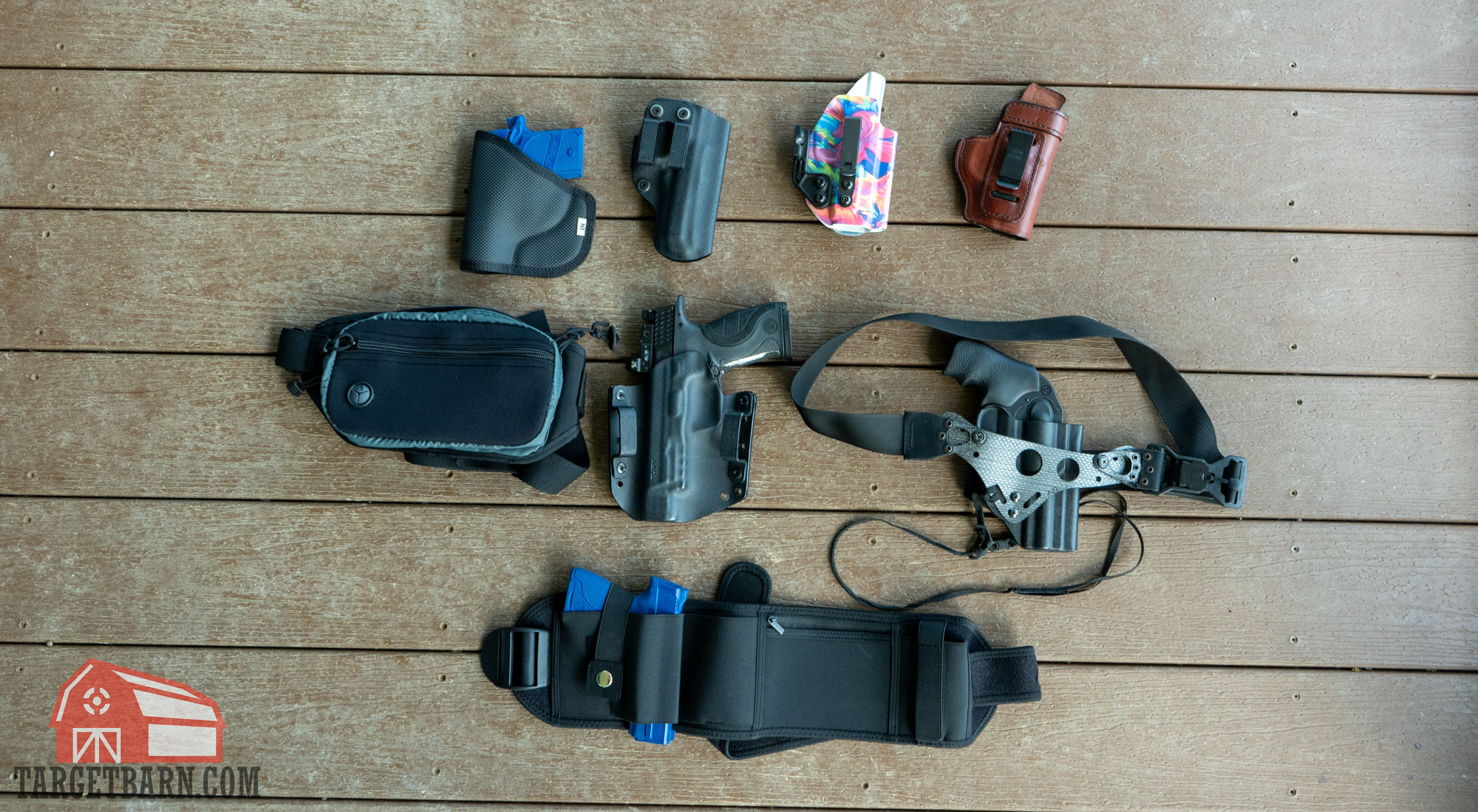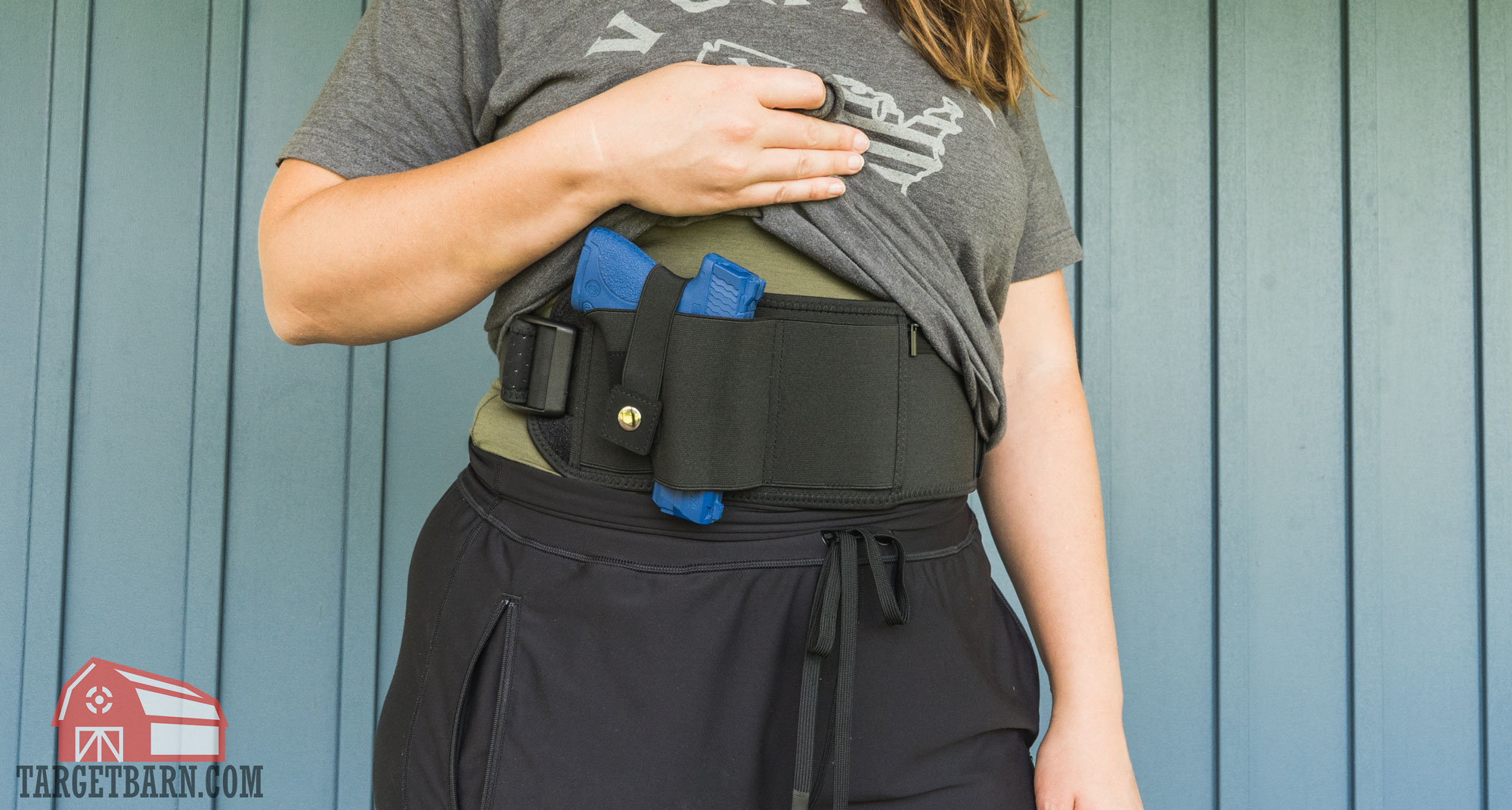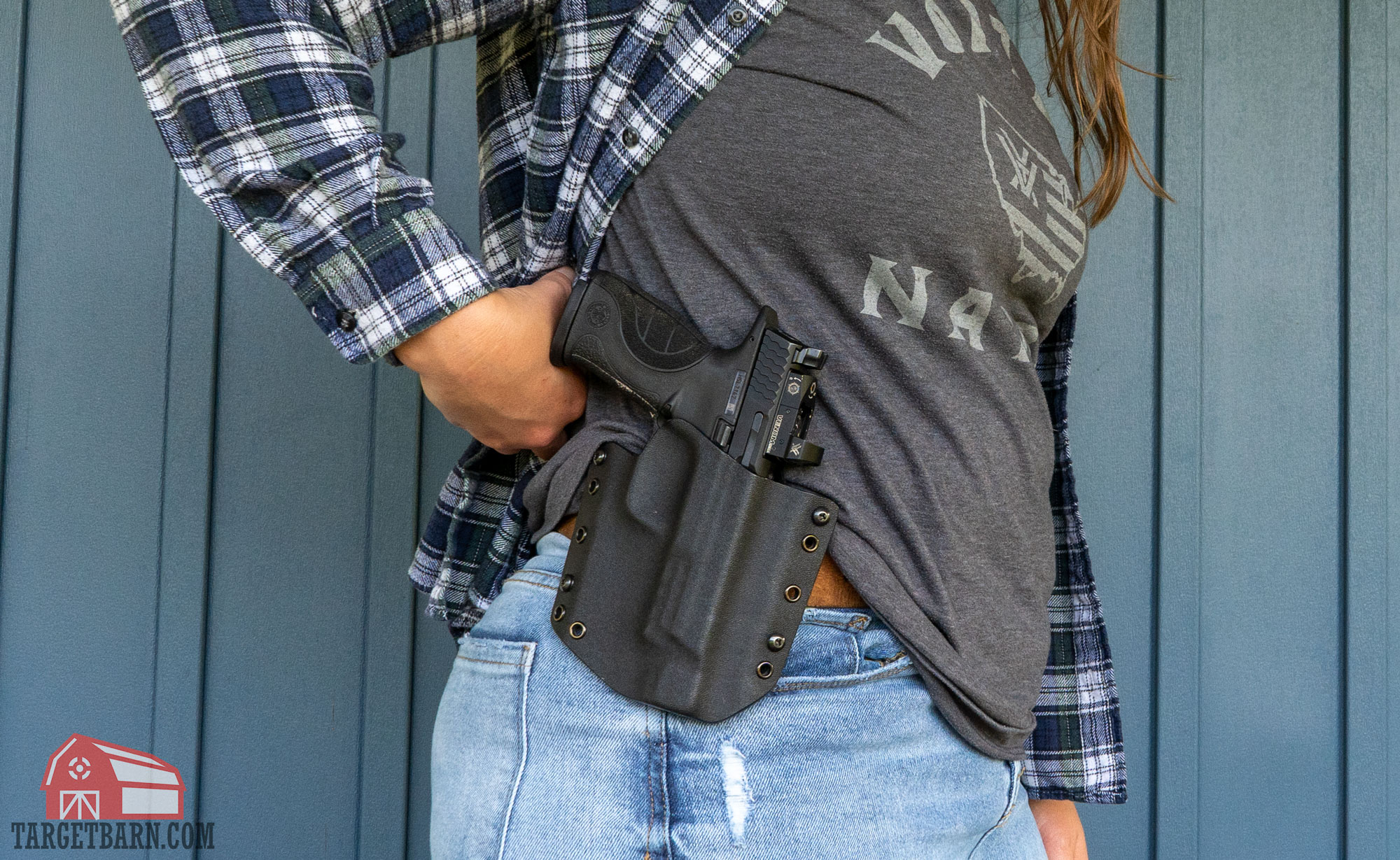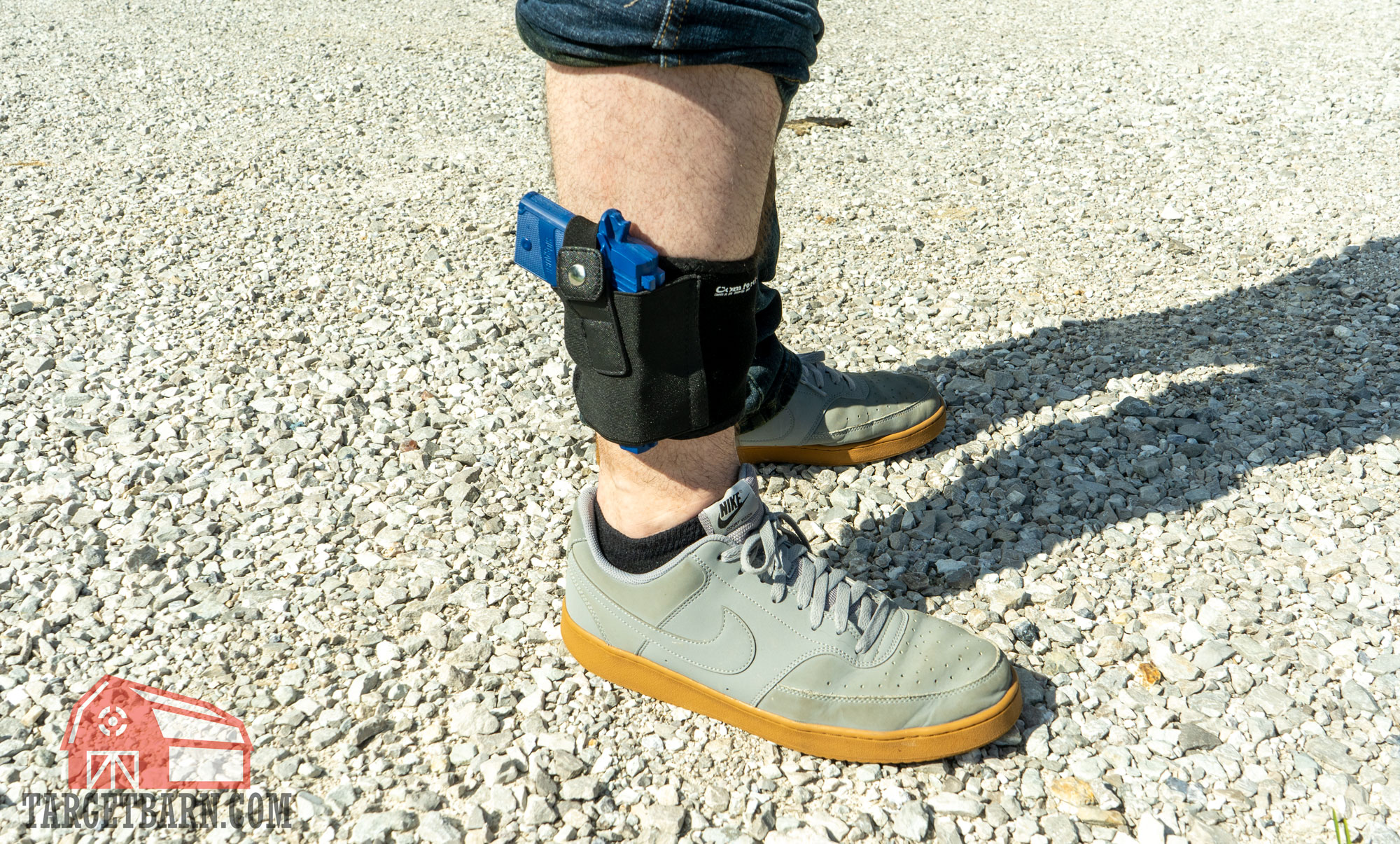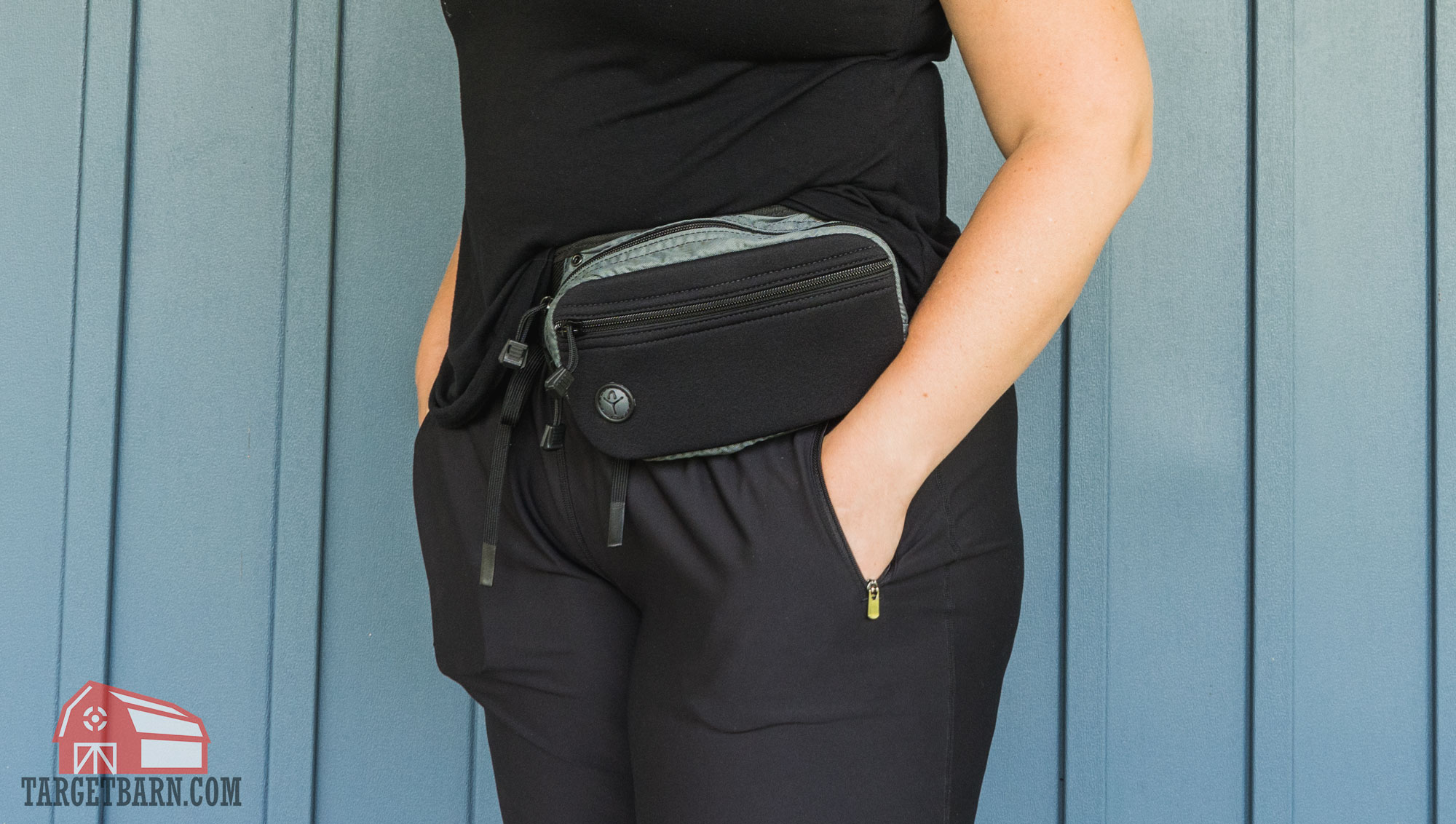One of the many things to learn as a new gun owner is all of the different ways to conceal carry. At first, it may seem daunting to figure out how you’ll keep your gun with you. That’s why today we’re going to help you make your decision by covering the most popular ways to conceal carry and the pros and cons that come with them.
The Top Ways to Conceal Carry
Some of the most popular ways to conceal carry are:
- Inside the Waistband (IWB)
- Appendix Inside the Waistband (AIWB)
- Outside the Waistband (OWB)
- Belly Band
- Ankle Carry
- Thigh Carry
- Pocket Carry
- Purse or Bag Carry
- Fanny Pack Carry
There are many ways people choose to conceal carry their guns. However, not all of them are equally comfortable, safe, or functional. Safety is usually where most of these methods of concealed carry fail. We’ll cover each of these styles of carries and look at their pros and cons.
As we go through each way to carry, keep in mind that a holster should do these three things:
- Provide trigger protection so the gun cannot be fired while in the holster.
- Retain the gun so that it does not fall out of the holster.
- Present the gun at the same angle, in the same orientation every time you reach for it.
Ways to Conceal Carry: On-Body vs. Off-Body
There are two broad categories of concealed carry. The first is on-body carry. This is where you carry a gun in some type of holster attached to your body or clothing. The second type is off-body carry. Off-body carry involves carrying your pistol in a purse, briefcase, or other type of bag.
There are pros and cons of both styles of carry. However, on-body carry is generally the safer choice for a number of reasons. First, your gun is less likely to be stolen from you when carried on your body, whereas a purse or bag is easily snatched by a thief. On-body carry also allows for a quicker draw in most cases.
On-Body Ways to Conceal Carry
Now that we’ve explained the differences between on-body and off-body carry, let’s take a look at some of the on-body ways to conceal carry.
Inside the Waistband
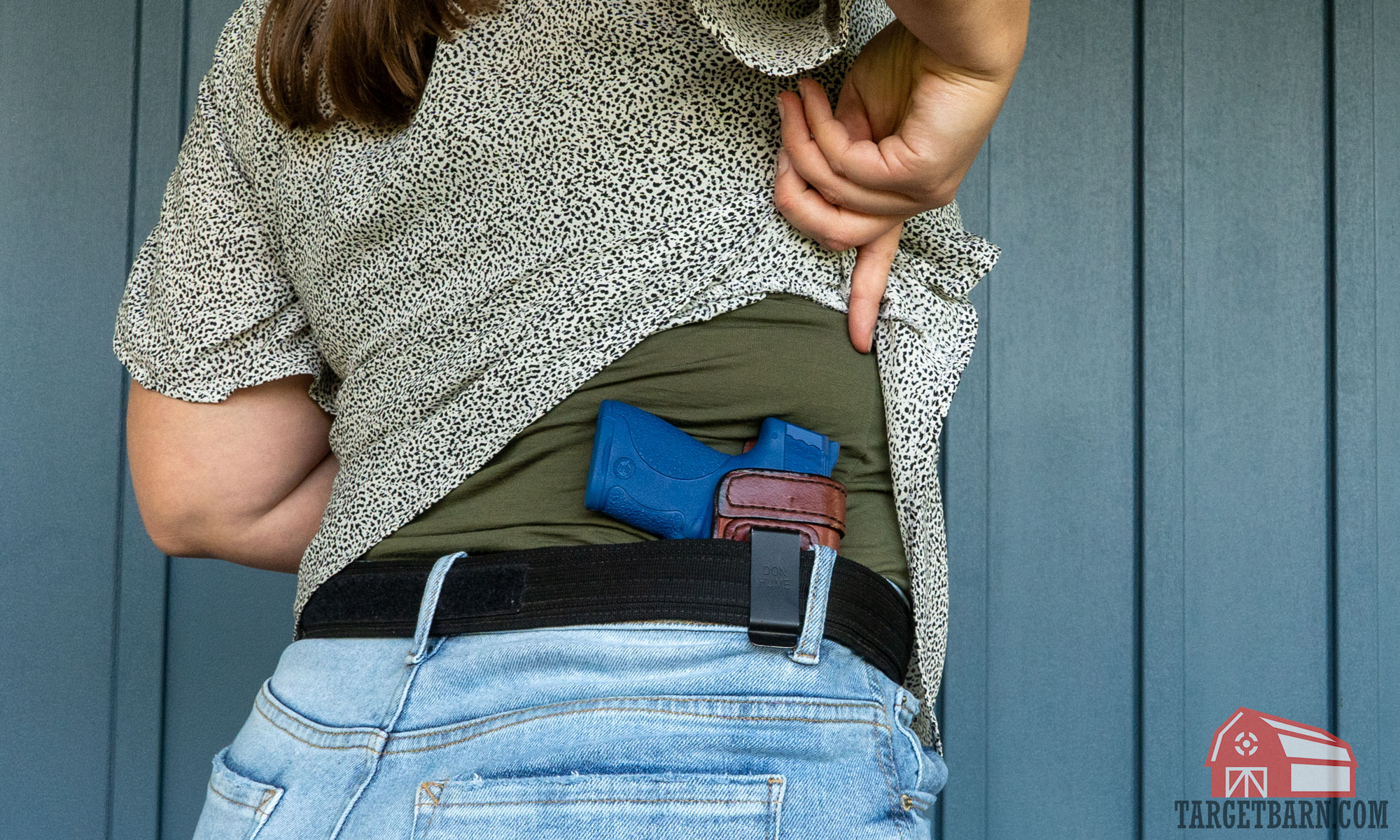
Pros:
- Much more concealable than outside the waistband carry
- Very secure when using a proper holster
Cons:
- The draw can be difficult and slow for some
- Holstering the gun can be dangerous when carried at the 4-5 o’clock position because you can’t look the gun into the holster
- Requires a belt
Inside the waistband carry, or IWB, is a method of carrying in which the gun’s holster sits inside the waistband of your pants. Inside the waistband holsters can be constructed from a number of different materials, but kydex, a lightweight polymer material molded to fit specific firearms, is the most popular. The holster typically attaches to your belt with some sort of clip or loops. Inside the waistband carry can be placed anywhere on the pants line, but the term IWB most often refers to carrying at the 4-5 o’clock, or kidney, position. It can also refer to carrying at the small of the back. This is opposed to carrying in the appendix IWB position, which we will discuss next.
One of the biggest downsides to IWB carry is that holstering the firearm can be dangerous. It is harder to visually check that the holster is clear of obstructions before holstering your gun. This means something could get in your trigger guard as you holster, causing your gun to fire. It can also be slower to draw the gun compared to appendix in the waistband.
Appendix Carry
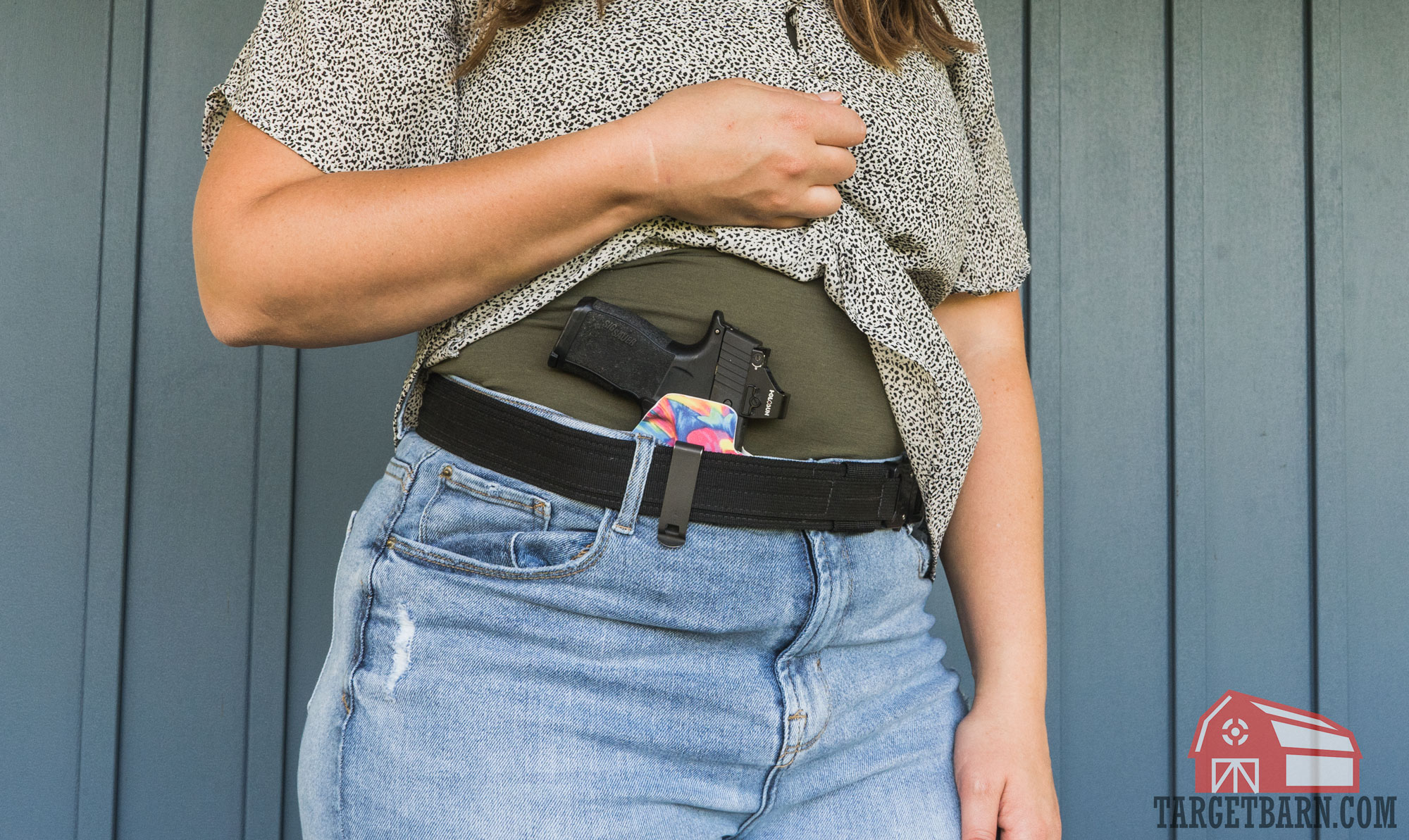
Pros:
- Easy to access for a fast draw
- Easy to conceal when you know concealment principles
- You can safely re-holster your gun by ensuring the holster is clear of obstructions first, then looking your gun into the holster
Cons:
- May take time to find the concealment sweet spot
- Requires a belt
- Can be uncomfortable if not properly positioned
Appendix carry, or AIWB (appendix inside the waistband), is a form of inside the waistband carry that involves carrying the holster in the 1 or 2 o’clock position (for right-handed shooters). AIWB is one of the most popular forms of carry for several reasons. First, AIWB holsters can be very easy to conceal with the proper gear once you know the concealment principles. AIWB carry also allows for quick draw times and allows the shooter to safely re-holster their gun.
Belly Band
Pros:
- Doesn’t require a belt to carry
- Can carry other items like a spare magazine on the belly band
Cons:
- Most options don’t properly retain the gun and protect the trigger
- Most options don’t offer features to help conceal the gun
The belly band holster is a piece of fabric that wraps around the shooter’s body and has a section to hold the gun. Some belly band holsters, like the Alien Gear Low-Pro Belly Band Holster have an attached holster that secures the gun well, but it doesn’t do the best job at concealing the gun as it has no features that let you adjust how the gun sits against your body. Many belly band holsters don’t offer any trigger protection at all, making them an unsafe way to carry.
PHLster Enigma
Pros:
- Can be worn with just about any outfit
- Highly adjustable to get the most concealment
- Doesn’t require a separate belt to carry
Cons:
- Takes time and effort to get adjusted for your body
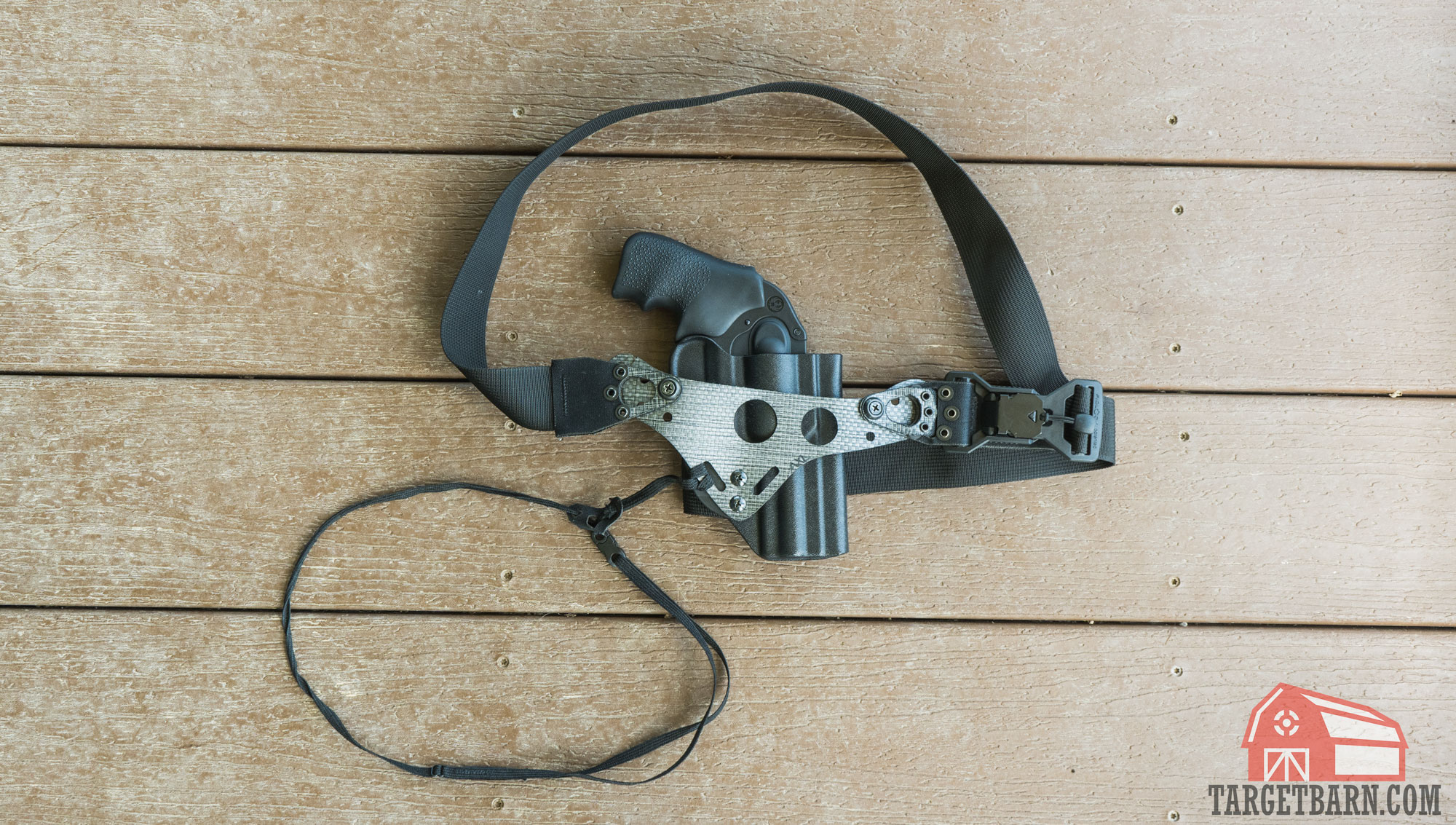
The PHLster Enigma is sort of a hybrid between an appendix holster and a belly band. It is an AIWB holster that is attached to a belt system that the shooter wears under their clothing. Because the belt system is worn underneath your clothes, it can be worn with a wide variety of outfits. It also offers more concealment features than most belly bands. The Enigma does take a little trial and error to get dialed in, so it is not a great choice for those wanting immediate results.
Outside the Waistband
Pros:
- Can conceal with a cover garment like a loose shirt or jacket
- Easy access to draw the gun
Cons:
- Requires a retention holster to carry securely if open carrying
- Requires a belt to securely retain the holster to the body
Outside the waistband carry, or OWB, involves carrying a holster on the outside of the pants, typically held up by a belt. Most outside the waistband holsters are made of hard leather or kydex.
If you want to conceal while carrying with an outside the waistband holster, you’ll need a cover garment like a loose shirt or jacket that will hide your gun. Outside the waistband carry is especially popular in the winter as the extra clothing layers tend to conceal the gun well.
Many shooters choose to open carry, although it is not an ideal way to carry for a number of reasons. If you do decide to open carry, you’ll need to use a retention holster so that it can not be easily snatched from you.
Ankle Carry
Pros:
- Great option for backup guns
- Doesn’t require a belt to carry
Cons:
- Hard to draw from a standing position
- Need to wear loose pants to conceal
- Doesn’t require a belt to carry
Ankle carry, as the name implies, involves carrying a gun in a holster around your ankle. This position can work well if you tend to wear loose pants or maxi dresses that don’t ride up your leg.
Ankle carry is not a good carry position when you need to draw from a standing position. However, it is a great option for carrying a backup gun. It can also be a good option for people who work at a desk who might need to draw from a seated position.
There are many ankle holsters on the market, but not all are made equal. Your ankle holster should provide trigger protection and retention just like any other holster.
Pocket Carry
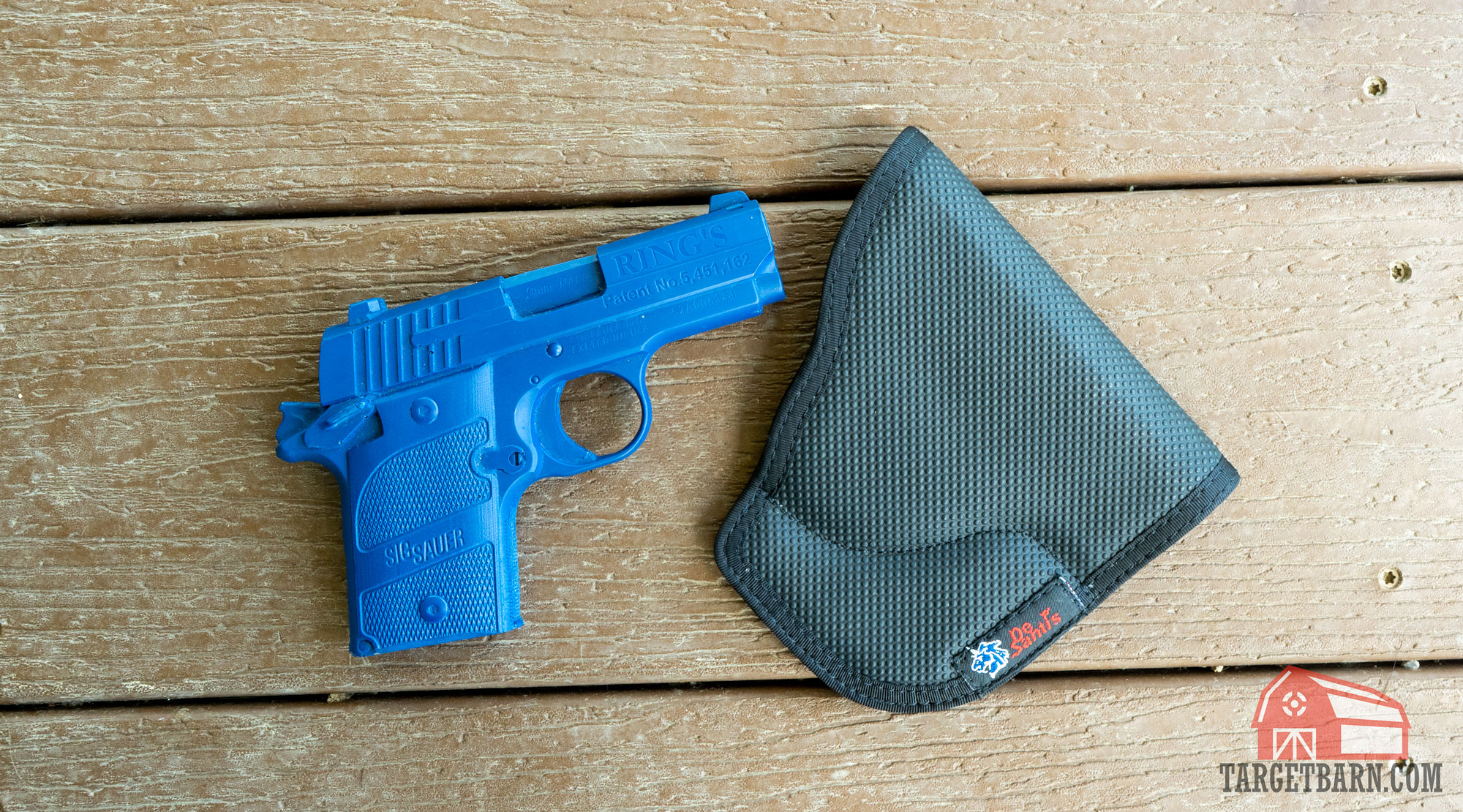
Pros:
- Doesn’t require a belt to carry
- Easy to conceal
Cons:
- Limited to smaller pistols, typically in weaker calibers, and with smaller ammo capacities
- Women tend to not have big enough pockets
- Must have dedicated pocket for gun that nothing else goes in
- Doesn’t require a belt to carry
Pocket carry is a popular way for shooters to carry sub-compact pistols, or “pocket pistols” in the pocket of their pants or jacket.
You should have a dedicated pocket that nothing else goes in. If your pockets are filled with things like your keys or chapstick, it’s easy for those to get hung up in the trigger guard, causing the gun to go off. There’s also the possibility that you go to grab your keys out of your pocket and your gun comes flying out with them. So, pick a designated pocket for your pistol and use a different pocket for everything else.
Pocket carry also requires a holster for a couple reasons. First, a good pocket holster will protect the trigger guard, ensuring the gun does not go off in your pocket. It will also keep your gun oriented in a way that allows you easy access and keeps it in the same spot every time you go to draw it. The holster will also help keep your gun clean from lint that tends to hang around in pockets.
Thigh Carry
Pros:
- Allows carry in a dress or skirt
- Doesn’t require a belt to carry
Cons:
- Hard to conceal with form fitting clothes
- Limited holster options aren’t safe
- Anatomy can dictate comfortability and concealment
- Often requires a smaller gun
Some women opt for a thigh holster when carrying in a dress or skirt. A thigh holster usually has a type of elastic or neoprene that wraps around the thigh with some kind of holster or pocket attached. It can also have garter straps to keep the holster from sliding down the leg. Thigh holsters can hold the gun on the inside or outside of the thigh, though your anatomy and gun will likely determine which is the better choice for you. It usually require a smaller gun to conceal well, though the looser dresses may be more forgiving to bigger guns.
Many thigh holsters on the market don’t offer adequate trigger protection, making them an unsafe way to carry. Without proper trigger protection, it’s possible to accidentally pull the trigger and fire the gun if your holster is slipping and you go to quickly adjust it. So, if you do opt for thigh carry, be sure the trigger can not be manipulated from outside the holster.
Off-Body Ways to Conceal Carry
Next, let’s look at a couple ways to off-body carry.
Purse or Bag Carry
Pros:
- Easy to conceal gun
- Can carry with many different outfits
Cons:
- Requires a safe setup with a dedicated gun pocket
- Slower draw times
- Purse or bag can be snatched from you easily
- Must keep purse or bag in your possession or on your body at all times
Purse carry is where the shooter carries their pistol in a purse, though this type of carry can be in a purse, briefcase, backpack, or other bag. It can come with much slower draw times, especially if you do not have a proper setup.
Generally, off-body carry is considered not as safe as on body carry for a number of reasons. First, it is much easier for a bad guy to take your gun when it is in a bag as opposed to being attached to clothing on your body. For example, a thief could snatch your purse off your shoulder very easily and take off with everything in it.
If you do opt for off body carry, you’ll want to be sure your gun has a dedicated pocket and holster that nothing else goes in. This is to make sure the trigger guard is adequately protected and that nothing gets caught in it when drawing the gun. You’ll also need to be diligent in keeping your bag on your body at all times. It is not unheard of for someone to leave their bag unattended, only for a child to dig through the bag and find the gun.
There are many companies that offer CCW purses and bags specifically made to carry a gun that try to solve some of the issues purse carry presents. If you choose to carry off-body in a purse or bag, it is worth getting the right purse or bag and extra training to ensure you’re carrying as safely as possible.
Fanny Pack Carry
Pros:
- Easy to conceal gun
- Attaches to body so not easily taken
Cons:
- Potentially slower draw times
- Requires a dedicated section with proper holster or setup to be safe
Fanny pack carry is similar to off body carry as the gun is carried in a bag. However, many don’t consider it true off-body carry. That’s because the fanny pack is secured to the carrier. As we discussed in our Galco FasTrax Pac Review, there are ways to set up a fanny pack for concealed carry that make it a feasible way to conceal carry.
You can potentially have a slower draw time with fanny pack carry. However, if you practice your draw like you would any other carry method, it is a perfectly adequate method of concealed carry.
Which Way Should You Conceal Carry?
Now that you know a few different ways to conceal carry and the advantages and disadvantages of each, you can begin experimenting to find what works for you. Whichever option you choose, you’ll want to ensure that your trigger guard is protected, your gun is adequately retained, and you can have a repeatable draw each time. Most importantly, you’ll want to practice with your chosen method so that you’re


